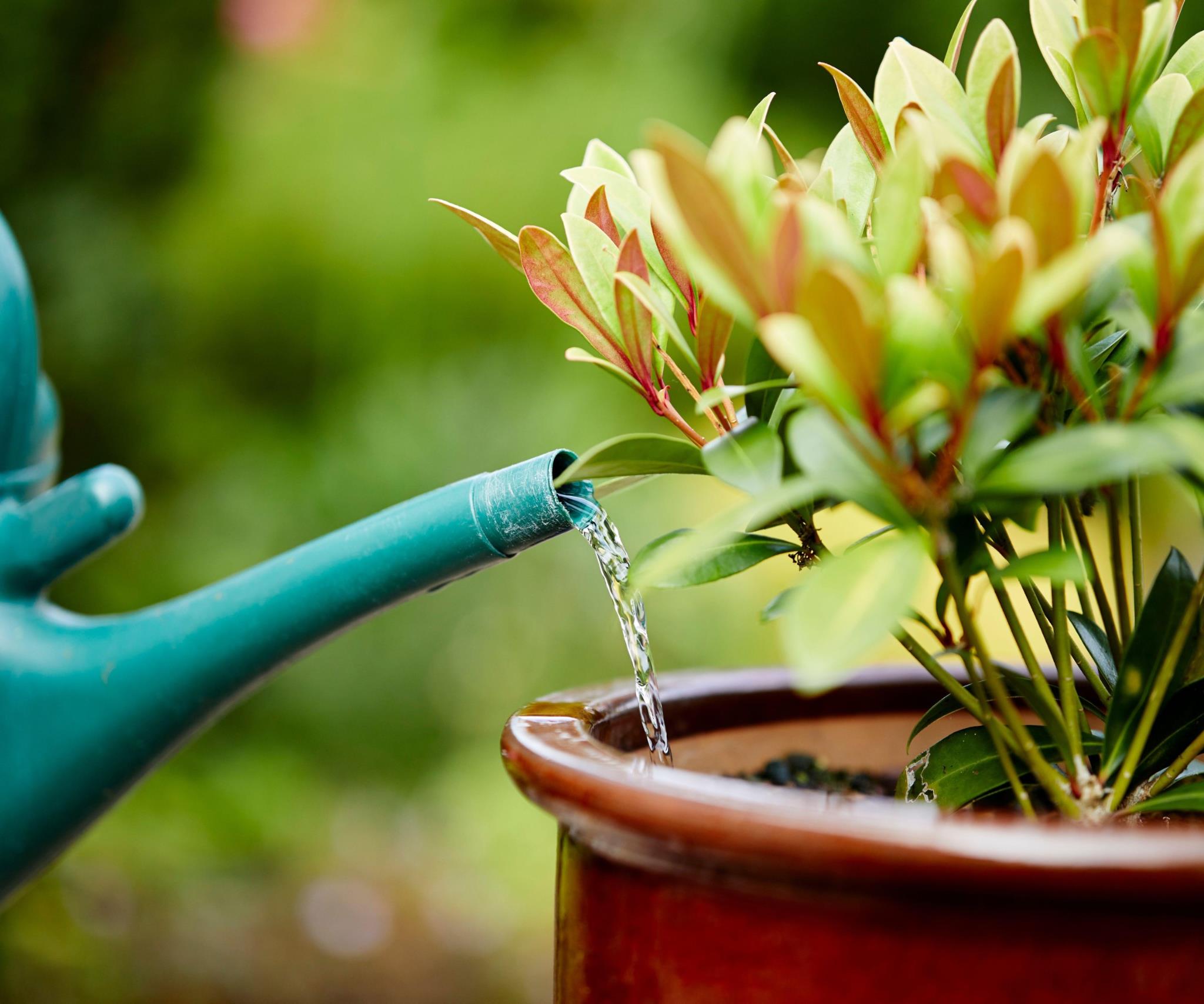Nothing stresses a potted plant faster than sloppy watering. Master how to water container plants by learning timing, frequency, and simple tools that keep roots evenly moist without drowning them.
This guide shows how to water potted plants using light, pot size, weather, and the quick finger in soil check so soil stays as damp as a wrung-out sponge. Expect practical container plant care tips on morning schedules, self-watering aids, and the fingertip test that secure proper watering for potted plants every season.
Why Container Plants Have Unique Watering Needs
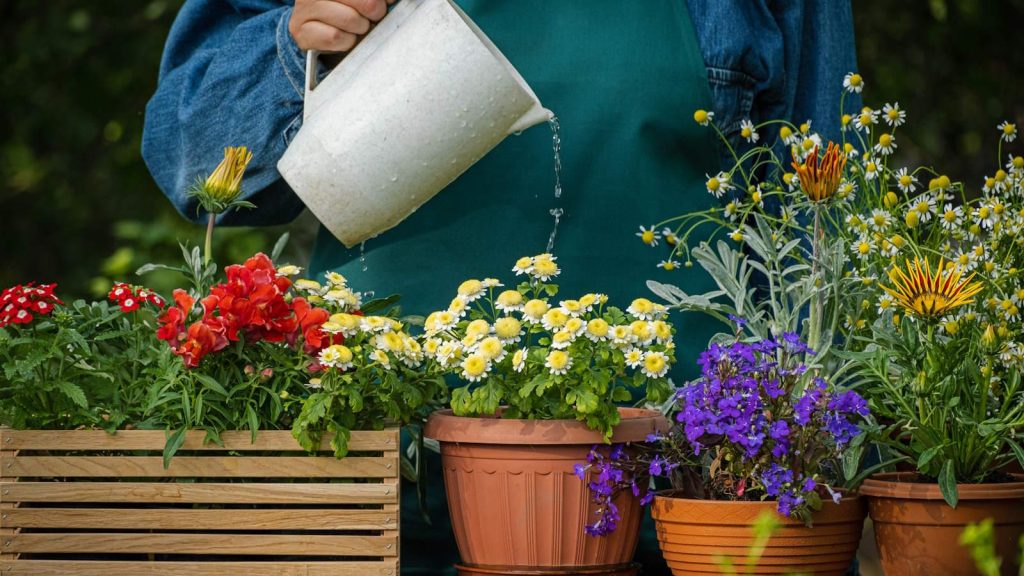
Limited soil inside a pot dries out faster than garden beds because roots pull from a tiny reservoir. Clay pots breathe and lose water, metal heats up, and plastic seals moisture, so watering needs for container plants swing widely by material. A ten-inch pot covers more root space than a four-inch cup, making pot size and water retention a daily balancing act.
Checking soil moisture in pots with a finger or meter keeps you ahead of wilt, while tailoring care to each species’ plant watering requirements prevents both drought and rot.
The Role of Proper Watering in Container Plant Health
Steady, right-sized watering keeps healthy plant roots plump and breathing, the first requirement for strong growth. With pores open, those roots ferry ions and water upward, driving nutrient absorption in containers that often lose fertility faster than garden beds.
Balanced moisture also powers turgor, the internal pressure that supports leaves and fruit, illustrating real plant hydration benefits daily. Finally, well-watered tissue mobilizes defensive compounds, thickening cell walls and outpacing pathogens for reliable plant disease prevention.
Spotting the Signs: When Your Container Plants Need Water
Leaves hanging limply and soil that looks pale and feels dusty signal it’s time to reach for the watering can. Those wilted plants often appear with yellow lower leaves, showing classic distress from thirst.
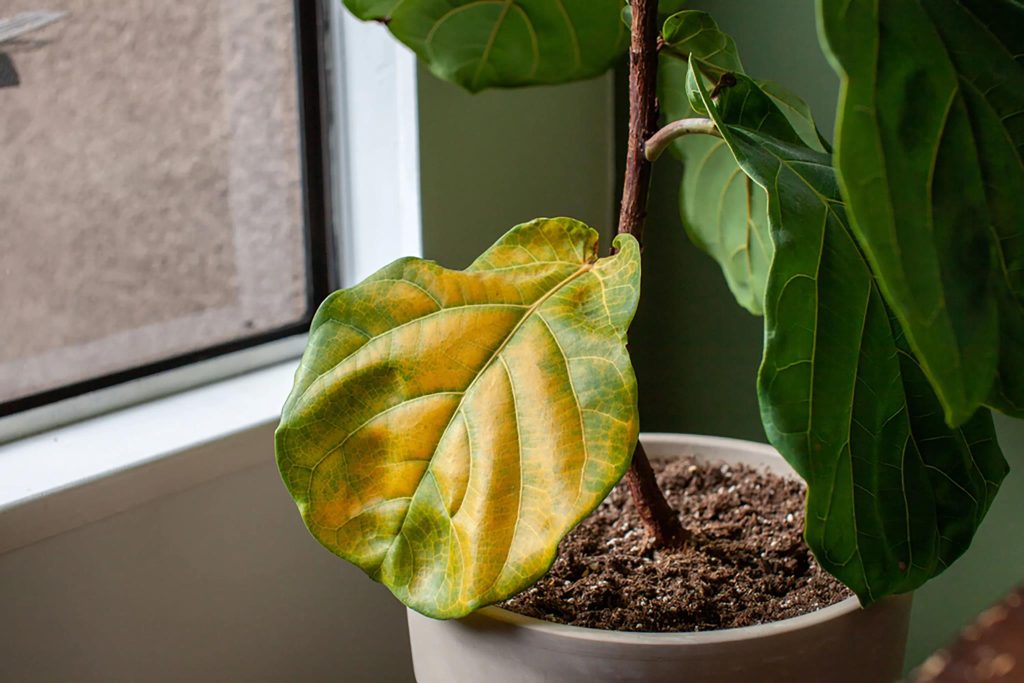
Scan the potting mix. A lighter tone and cracking surface are unmistakable dry soil signs. Slip a finger two inches down for a quick moisture level test. Cool, damp particles mean wait, but a crumbly texture says water now. Following these cues helps you to know when to water container plants without drowning roots.
Choosing the Best Watering Method for Your Setup
A few minutes spent matching tools to routine pays off in healthier pots. Classic cans and hose nozzles top the list of watering tools for pots, giving balcony growers fast control. Pick a slim spout for accuracy or a wand nozzle to pamper seedlings. Self-watering containers keep soil moist for days but need periodic flushes to prevent salt buildup.
For hands-off efficiency, drip irrigation delivers slow, targeted moisture and scales easily as the collection grows.
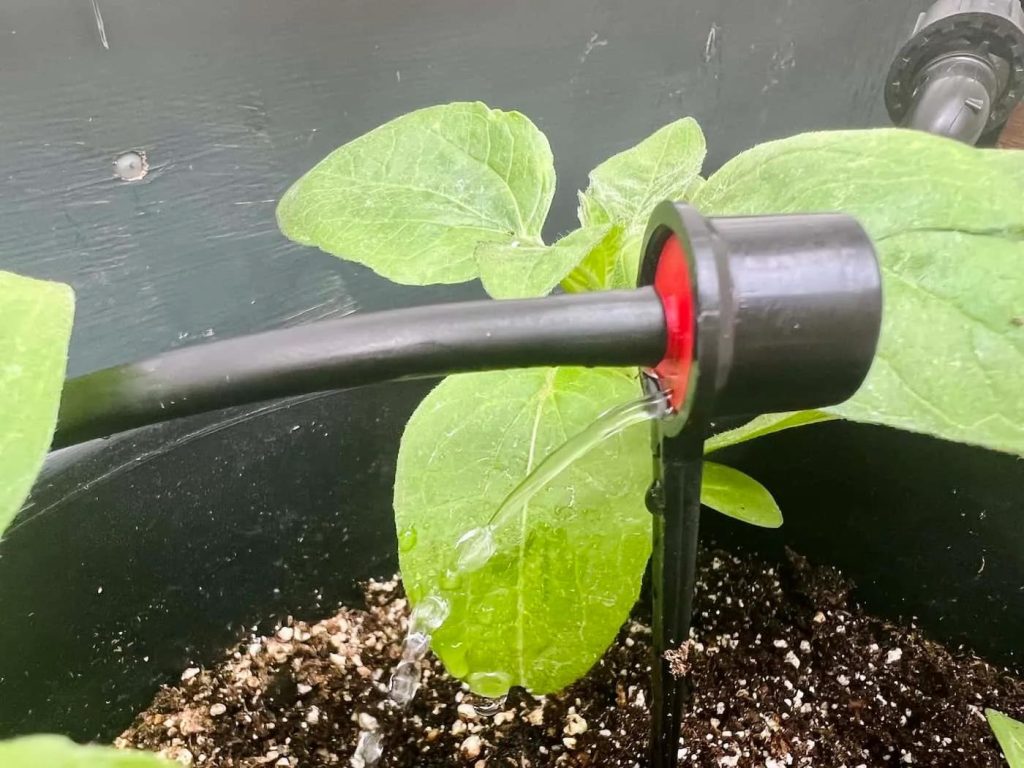
The best way to water potted plants is the one that fits available time and each plant’s thirst.
Matching Water Frequency to Plant Types
Succulents live happily on lean rations. They are a true low-water plant class, thriving when soil dries fully. Culinary herbs sit in the middle. Basil, mint, and friends prefer moisture yet welcome a brief dry top layer, so a flexible watering schedule of every few days hits the mark.

Tropical foliage craves steady moisture and humidity, making twice-weekly checks plus focused tropical plant care essential. Color-hungry bloomers such as geraniums want similar regularity. Use these plant-specific watering tips to cluster pots by thirst so no container gets forgotten or drowned.
The Best Time of Day to Water Container Plants
Early morning wins as the best time to water potted plants because cool air slows evaporation and gives roots a head start before midday heat. Skip drenching pots in late afternoon or at night. Soggy foliage sits too long and fungal spots follow.
These quick container garden watering tips shift with the calendar: deep dawn drinks in summer, lighter mid-morning checks in spring and fall, and late-morning pulses in winter to dodge overnight ice.
Avoiding Overwatering and Drainage Issues
Water that lingers is silent trouble for containers. Overwatering potted plants starves roots of air, inviting fungi that show up as root rot symptoms: mushy roots, yellow leaves, and that swampy smell.
The fix starts at the bottom. Always choose pots with generous holes because consistent drainage for container plants lets excess water escape and pulls oxygen in. Pair those pots with a loose mix of peat, bark, and perlite so moisture moves, not pools. Skipping saucer dumping and checking soil before each drink prevents costly watering mistakes.
Must-Have Tools for Efficient Watering
Indoors, slim watering cans with a 10- to 14-inch spout slip past foliage, delivering a gentle pour without drips. Add a pocket-sized moisture meter for plants to check soil before each drink and avoid root rot.
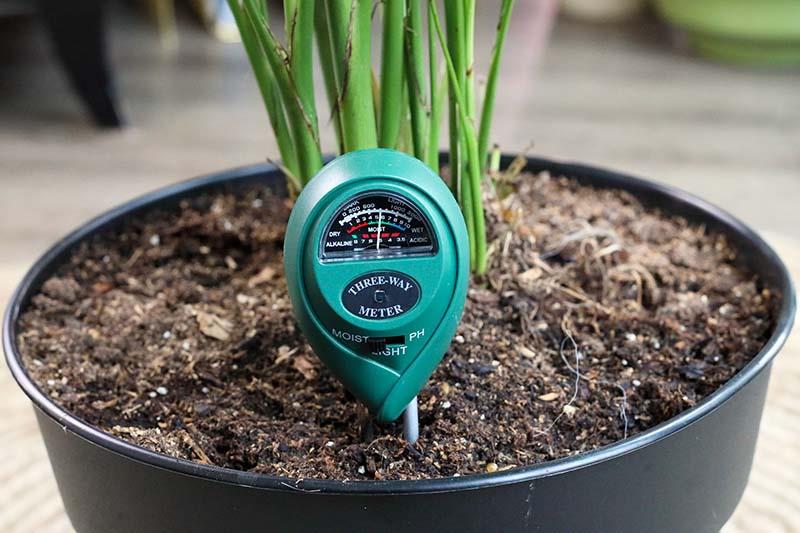
Outside, a telescoping watering wand gives a soft rain to hanging baskets while saving the back. Models with thumb-control heads prove durable and easy on wrists. Round out the kit with smart garden watering gadgets like timers that automate early-morning soaks.
Seasonal Adjustments: Watering in Summer vs. Winter
Summer sun pulls moisture from containers faster than leaves can absorb it, so watering in hot weather often means an early-morning soak, followed by a quick evening top-up, keeping the soil consistently damp yet never soupy.
As days shorten, growth slows, and roots rest. That shift calls for watering adjustment. In cooler months, aim for a deep drink only when the top inch feels dry, a key piece of winter plant care that prevents rot.
Mulching: Your Secret Weapon for Moisture Control
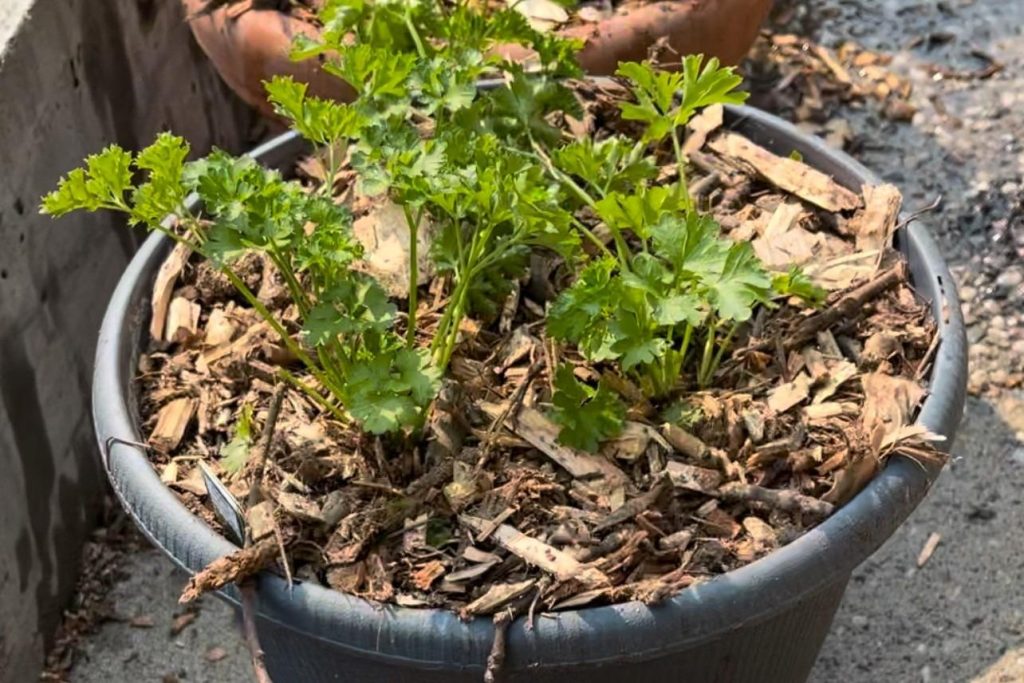
A thin layer of bark, straw, or shredded leaves over the soil acts like a mini sunshade, locking in moisture and cooling roots. This mulch for container plants can cut surface evaporation, giving you longer gaps between waterings.
Better moisture retention for pots also means steadier soil temperatures that reduce stress on thirsty annuals. Choose an inch of container garden mulch to smother weeds and, as it breaks down, feed microbes that enrich the mix. It is the simplest win for committed water-saving gardening.
Avoiding Common Mistakes When Watering Container Plants
Dry, crispy leaves usually point to watering mistakes like splashing the soil surface and walking away. Soak the pot until water streams from the holes. Roots drink and the foliage thanks you. Skipped days followed by a flood rank high among common watering errors. Set a morning or evening alarm and stick to it.
Good drainage is non-negotiable: if your decorative pot has no holes, keep the plant in its perforated nursery pot and set that pot inside. These are smart potted plant care tips that pair with simple plant watering hacks to keep your plants thriving.
Conclusion: Mastering the Art of Watering Container Plants
Consistent, mindful watering keeps pots vibrant all season. Follow the container watering guide you just read: water early, soak until moisture drips out, then let soil breathe. Check moisture with a finger daily and tune frequency when summer heat hits or cool winds return.
This simple habit becomes a plant care routine that drives container gardening success and keeps roots strong, leaves glossy, and blooms relentless, so you always enjoy healthy potted plants.
Try today’s watering tips on your favorite pot and share a photo of your healthy potted plants below!

